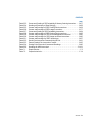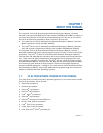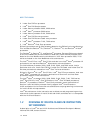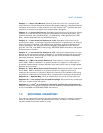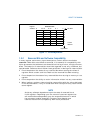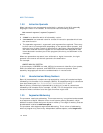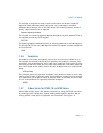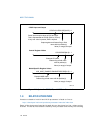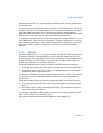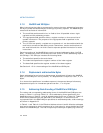
Vol. 2A 1-7
ABOUT THIS MANUAL
For example, a program can keep its code (instructions) and stack in separate
segments. Code addresses would always refer to the code space, and stack
addresses would always refer to the stack space. The following notation is used to
specify a byte address within a segment:
Segment-register:Byte-address
For example, the following segment address identifies the byte at address FF79H in
the segment pointed by the DS register:
DS:FF79H
The following segment address identifies an instruction address in the code segment.
The CS register points to the code segment and the EIP register contains the address
of the instruction.
CS:EIP
1.3.6 Exceptions
An exception is an event that typically occurs when an instruction causes an error.
For example, an attempt to divide by zero generates an exception. However, some
exceptions, such as breakpoints, occur under other conditions. Some types of excep-
tions may provide error codes. An error code reports additional information about the
error. An example of the notation used to show an exception and error code is shown
below:
#PF(fault code)
This example refers to a page-fault exception under conditions where an error code
naming a type of fault is reported. Under some conditions, exceptions which produce
error codes may not be able to report an accurate code. In this case, the error code
is zero, as shown below for a general-protection exception:
#GP(0)
1.3.7 A New Syntax for CPUID, CR, and MSR Values
Obtain feature flags, status, and system information by using the CPUID instruction,
by checking control register bits, and by reading model-specific registers. We are
moving toward a new syntax to represent this information. See Figure 1-2.



